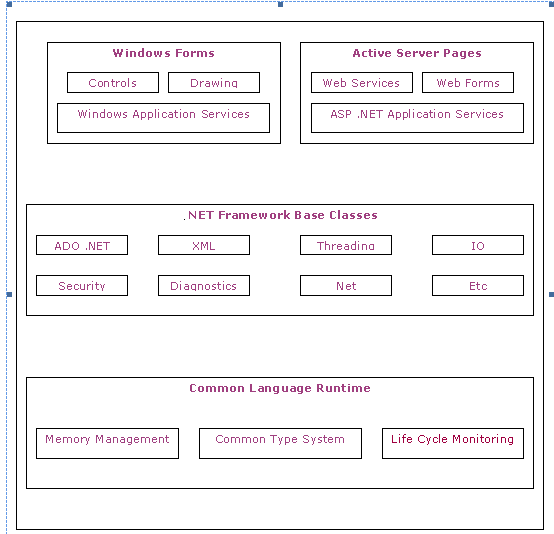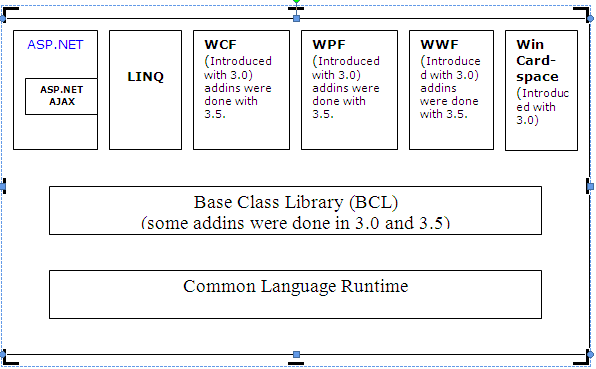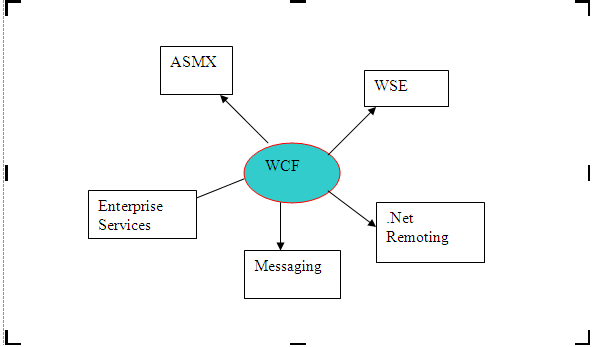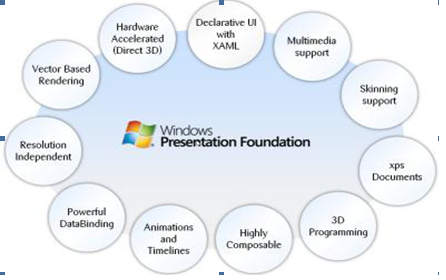.NET Framework 2.0, 3.0 and 3.5
.Net Framework is a common environment for building, deploying and running web services and applications like web applications, window applications, mobile applications etc.
You can see the .NET Framework 2.0 diagram below.
- Windows Forms
- Active server pages
- .Net Framework base classes
- Common Language Runtime

Now, I will tell you some important points regarding Framework.
Common Language Infrastructure (CLI):
Common Language Infrastructure allows software components to:
- Pass data between each other without regard to the Programming languages.
- Execute on Different Operating Systems and Different Hardware platforms without having to compile a High-Level source code.
An Implementation of Common Language Infrastructure is known as Common Language Runtime.
Common Language Runtime (CLR):
Common Language Runtime is a very important one in .Net Framework. It manages building, deploying and running .Net applications. It is known as Virtual Execution System (VES). The code which is run by Virtual Execution System is known as Managed Code.
Common Language Runtime responsibilities are:
- Garbage Collection: CLR manages memory leaks automatically.
- Code Access Security: Manages privileges like Read-only, write-only etc
- Code verification: Type safety
Common Type System (CTS):
Common Language Runtime facilitates the Common Type System (CTS). A Number of types are supported by CLR and described by CTS. Both Value types are supported:
-
Primitive data types (int etc)
- Reference types. (Arrays, strings etc)
In order that two languages communicate in a smooth way. Ex: Vb.Net uses Integer and vc++ uses long data types. Communication between these two is complicated. So two languages use CTS to communicate with each other. CTS will change those data types into System.Int32 to communicate easily.
Common Language Specification (CLS):
Common Language Specification is a subset of Common Type System (CTS).
It facilitates all .Net languages into an umbrella; in other words, communication among .Net languages in a seamless manner.
Microsoft Intermediate Language (MSIL):
.Net Source code is compiled into Intermediate Language (IL), also called Common Intermediate Language (CIL). CLR runs the IL code into machine code. (Occurred at the time of application is installed).
.NET 2.0 to .NET 3.5
If we can observe .Net Framework from 2.0 version to 3.5 Version
These are the changes that happened:

-
WCF-Windows Communication Foundation
-
WPF-Windows Presentation Foundation
-
WWF-Windows Workflow Foundation
Windows communication foundation:
WCF is a programming Platform and run time system for building, running and deploying the network distributed services. It is the latest Service oriented technology.
Interoperability is the fundamental characteristics of WCF. It has web service, .Net remoting, MSMQ and COM+. It combines all these things into a single umbrella.
Means it provides a common platform for all .Net communication.

Windows Presentation Foundation (WPF):
Windows Presentation Foundation is a Microsoft's Next generation UI Framework to create applications like rich user experience. It is the part of .Net Framework 3.0 and higher.
You can see the below picture that shows the features of Windows Presentation Foundation (WPF).

We can use these tools to get rich applications called Microsoft Expression. It consists of the four products:
Expression Blend is built to create user interfaces in WPF and Silverlight. It builds the bridge between designer and developers. It can open VisualStudio solutions
Expression Design is a lightweight version of Adobe Illustrator to create and edit vector graphics.
Expression Media is built to encode, cut and enrich video files and optimize them for silverlight streaming
Expression Web is Microsoft's next generation of HTML and Javascript editor. Its the replacement for Frontpage.
I will give you the WPF and WCF concepts in depth in my next article.
Till then ....